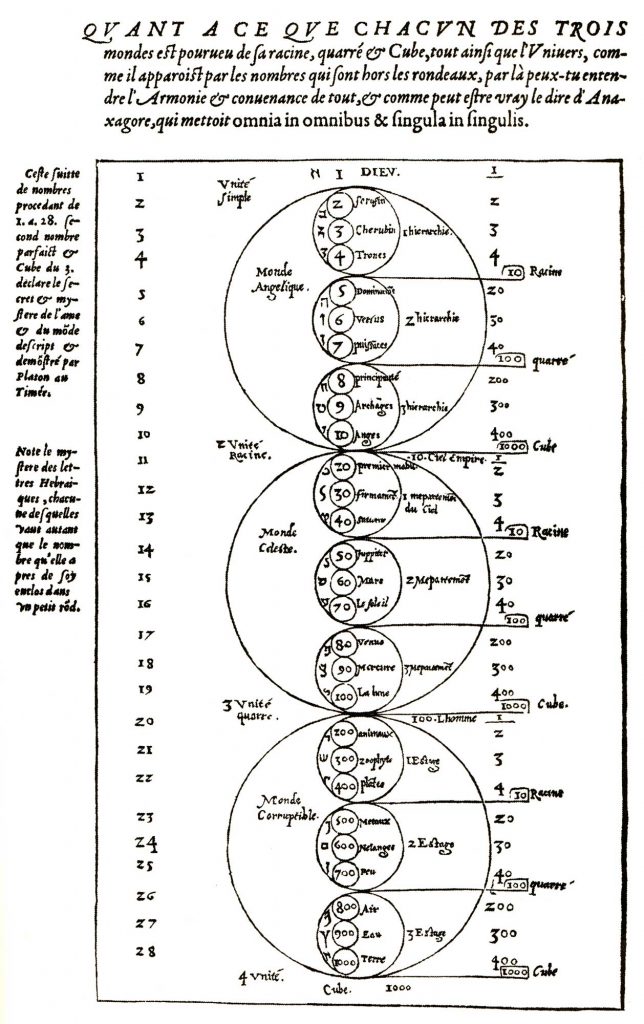Fractal Cosmologies
Premodern cosmologies from ancient to early modern times often exhibited striking self-similar or fractal properties. Classical examples show up in so-called Neo-Platonic and Neo-Confucian traditions, in a large cross-cultural family of scholastic systems, and in important medieval artistic, literary, and architectural works. Extreme scholastic and syncretic thinkers throughout Eurasia, especially towards the end of the premodern era, sometimes claimed that the entire cosmos was fractal in nature — that every part of reality in some way reflected every other.
The diagram on the right contains an extreme fractal picture of the cosmos developed by a sixteeenth-century commentator on the works of the Renaissance syncretist Giovanni Pico della Mirandola (1463-1494). The diagram appears in Nicolas LeFèvre’s 1579 French translation of Pico’s Heptaplus (1489). The diagram is discussed in Farmer, Syncretism in the West: Pico’s 900 Theses (1486) (Pico Home Page).
The fractal structure of Pico’s system is evident in the scaled circles-within-circles representing different ontological “levels” in the universe. LeFèvre sums up the principles of Pico’s system in words traditionally (if anachronistically) ascribed to the pre-Socratic philosopher Anaxagoras: Omnia in omnibus & singula in singulis [All things exist in all things, and all individuals in all individuals]. The saying could pass for a good modern definition of a self-similar or fractal system.
It is possible to simulate the growth of premodern fractal systems in computational models, iteratively “working up” texts using repetitive exegetical methods similar to those used by premodern religious and philosophical commentators. The iterative action of those methods, coupled with dissipative forces operative in all manuscript traditions (the consequence of linguistic drift, textual losses, scribal errors, and other factors), resulted in systematic “outputs” that had emergent fractal properties. Computer simulations of these processes provide tests of our historical model, which attempts to explain important parallel developments in the evolution of Eastern and Western traditions.
Return to Paper Abstract Return to Pico Home Page
Feb 2023 format changes from web server migration.

